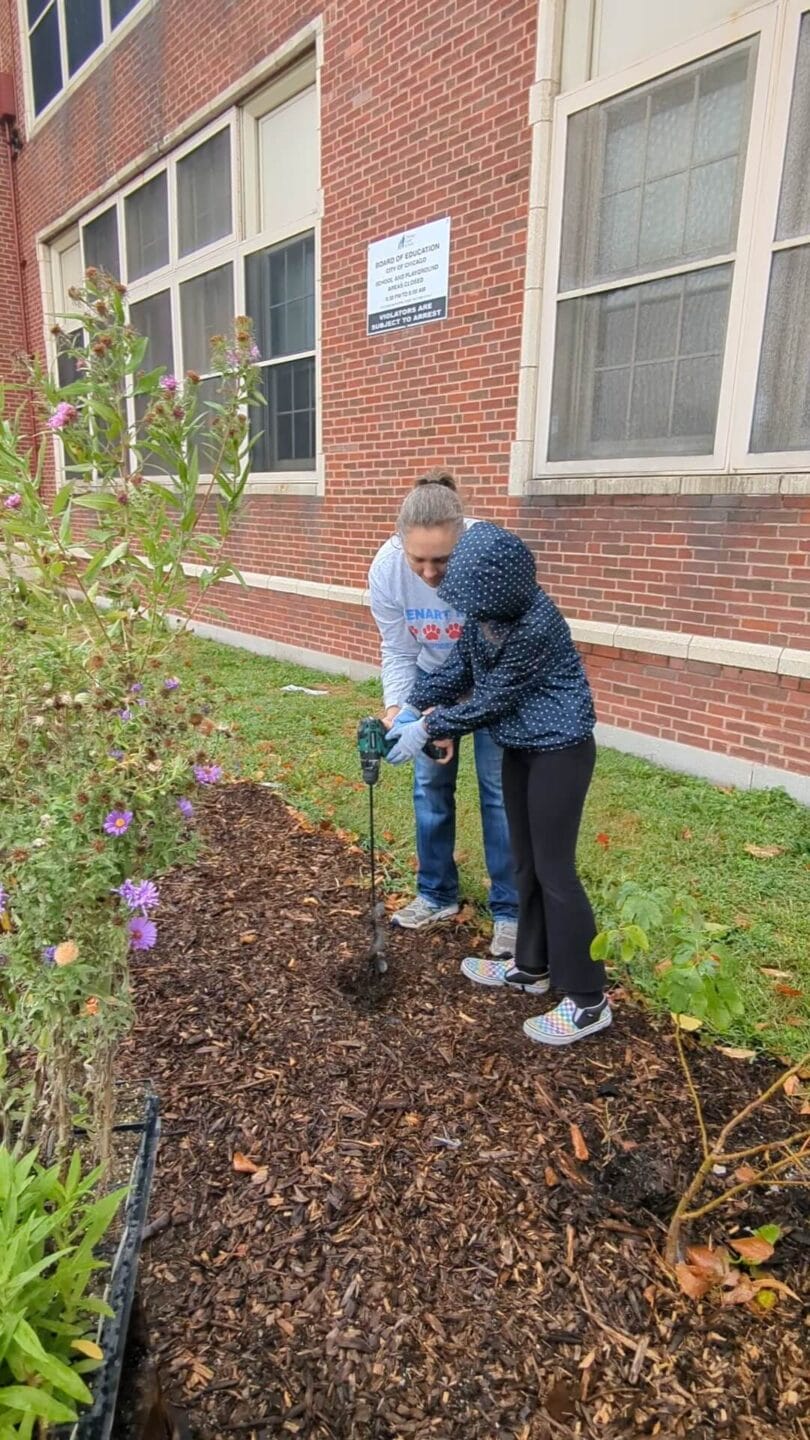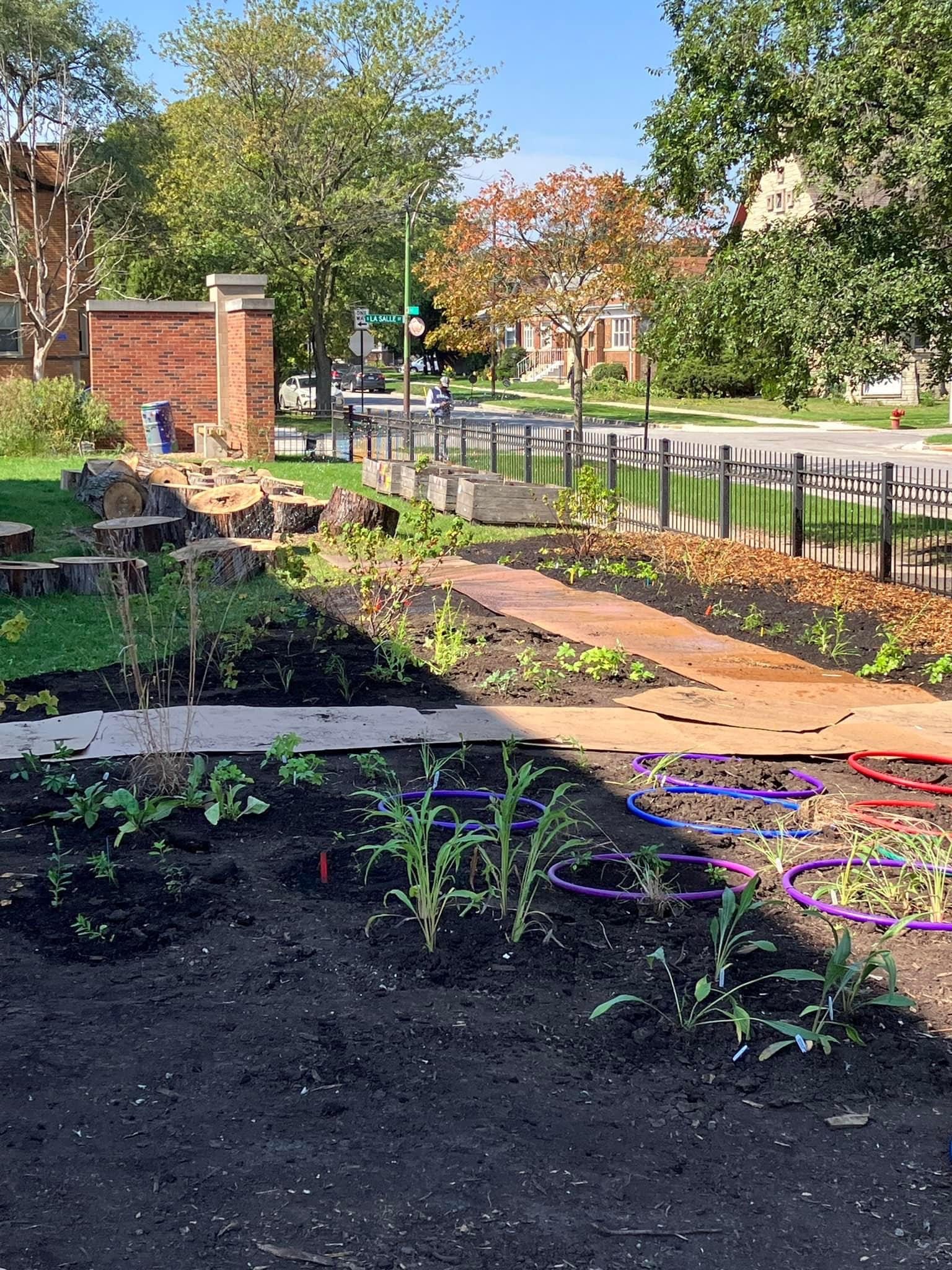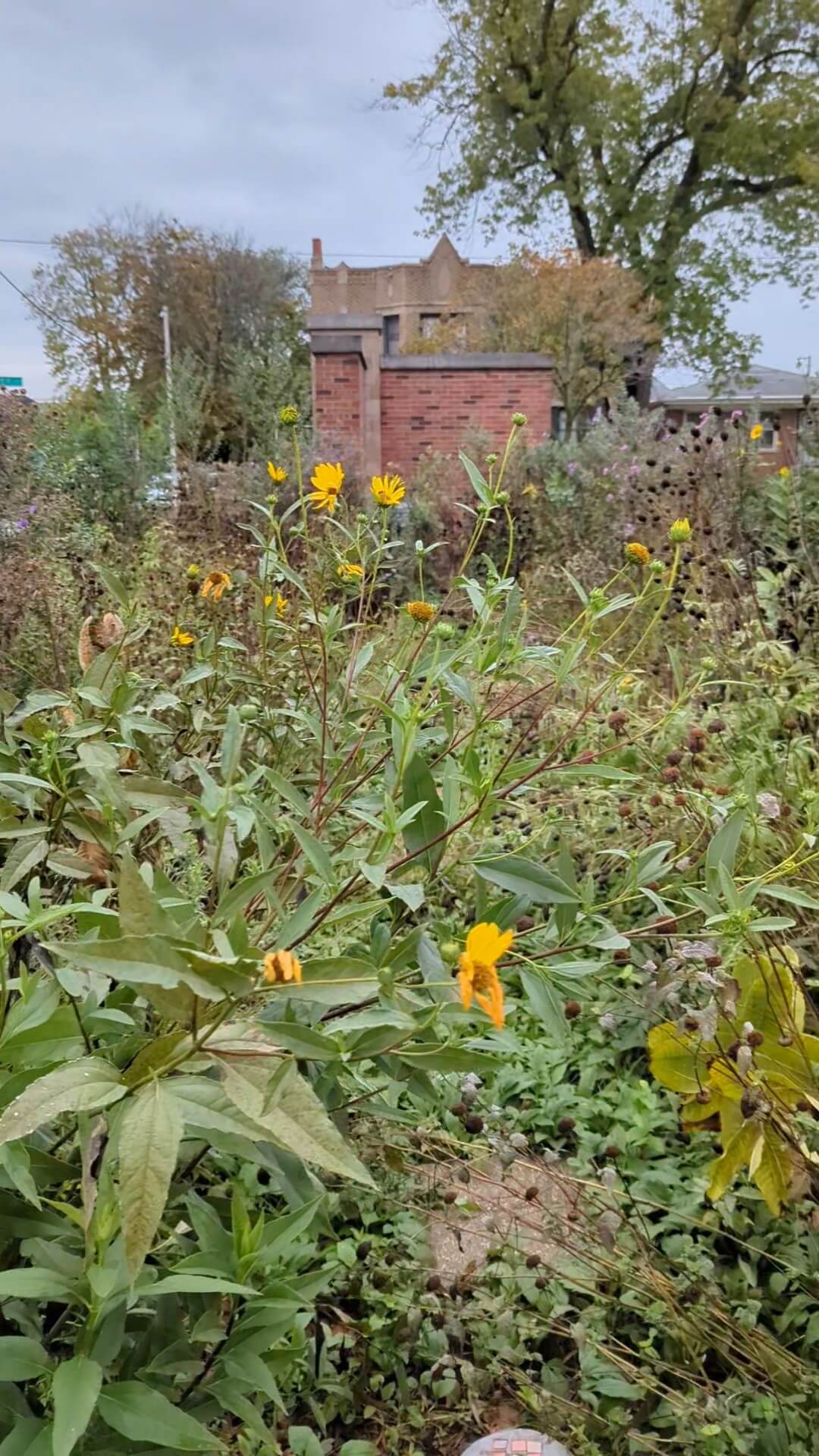Community Engagement
Customer Spotlight: Kimberly Smolen

By: Julia Hammerlund
Kim Smolen is an educator with a ton of passion for native plants and an ambitious goal. She is taking “kill your lawn” and pollinator gardening to a whole new level by working to transform the entire city block of “lawn” at her CPS school, into a biodiverse, pollinator haven in Chicago’s West Chatham neighborhood. It has been no small feat, but the rewards in education, beautification, and support for local wildlife and ecosystems has been well worth it.
Mrs. Smolen describes herself as an “all in” kind of person. Her passion and curiosity for native plants began with her love of pollinators. A friend introduced her to the Monarch Community Science Project hosted by the Field Museum,and she was hooked. Soon, Kim had planted natives throughout her plot at home, receiving a “Pollinator Pocket” garden accreditation from University of Illinois Extension Program.
As a channel to process the grief, anger, and frustration following the Uvalde, Texas school shooting at Robb Elementary on May 24, 2022, Kim asked her former principal at Ted Lenart Regional Gifted Center if she could take the school’s north lawn and transform it into a pollinator haven. Her principal agreed and the work on the first plot began that summer as part of Mrs. Smolen’s summer program.

Through numerous partnerships (Monarch Awards Foundation, Wild Ones, Chicago Grows Food, Possibility Place, Chicago Region Tree Initiative, Urban Canopy), funding through Lenart Parent Pride Group, and grants (Illinois Schoolyard Habitat Action Grant Program, Wild One’s Lorrie Otto Seeds for Education Program, and Roots & Shoots Project Grants) Smolen’s vision began to feel tangible. Since working in smaller spaces is what was familiar to her, she split the 1200sq north lawn into two plots. The first plot, planted in July of 2022, began with tarping the 525sq ft area off to kill the grass. Mrs. Smolen and students then began their second phase: planting the 398 native seedlings and 36 native pints.

Fast forward to a little over two years later, we are greeted with the current in-season blooms of a nearly 6’ ft False Sunflower (Heliopsis helianthoides) and New England Aster (Symphyotrichum novae-angliae). The second plot that was planted at the end of July 2023, has also taken off. We stand near the blooming Grass-Leaved Goldenrod (Euthamia graminifolia) and she points out the ninebark shrubs (Physocarpus opulifolius) and wild garlic (Allium canadense) planted among all the wild strawberries (Fragaria virginiana) that they have used for groundcover. The beauty of both plots in late September is so diverse in the various sizes, textures, and colors. The contrast between what is alive and blooming is framed by the skeletons of the plants that are now offering their dried seeds to the earth and birds. As we stand in the second plot we hear a cricket chirp and Mrs. Smolen remarks that is one of her favorite parts of this whole project: hearing and seeing the ecosystem slowly come back to life with the background noise of the Dan Ryan Expressway.
On our walk back to the new plot on the south side of the building, Mrs. Smolen points out the various oak species, serviceberry (Amelanchier arborea), and other species amongst the fifteen trees planted through grants from Chicago Region Trees Initiative. Each classroom in the school was responsible for naming their tree, planting, and caring for it. We walk past the compost bins that are decorated in student artwork. She mentions that the logs that line the plots and walkways within the plots, were received by ChipDrop: a service that connects arborists and gardeners aiming to keep wood chips and logs out of landfills and instead, utilized by gardeners. She shares her strategy in choosing natives for the new south side plot that includes Rattlesnake Master (Eryngium yuccifolium), Little Bluestem (Schizachyrium scoparium), and Purple coneflower (Echinacea purpurea) among the Golden Alexanders (Zizia aurea), as it will be drier and receive the hottest bits of daily sun. She shares how thrilled her and her students were when the black swallowtail caterpillars covered the Golden Alexanders (Zizia aurea) in the plots on the north lawn, devouring the leaves, that she placed another order with us that same week in an effort to supply them with more food.

Our short trek back to the freshly carved out south plot ends. Mrs. Smolen has shown her student volunteers how to dig the holes for the native pints using a drill with an auger attachment. They are so excited about the new skill they have learned with the power tool that they are slightly disappointed when all the holes have been dug. Mrs. Smolen gently redirects them to placing plants near the holes and we all begin planting. More parents and student volunteers arrive and are assigned to some upkeep and weeding on a smaller plot near a staircase. When I ask Mrs. Smolen how the community can best support her, she immediately states “Volunteers! Volunteers for weeding and upkeep!” If you want to help support Mrs. Smolen and her students, you can contact her via email at: klsmolen@cps.edu .
We feel overwhelmingly grateful to be a part of Mrs. Smolen’s truly inspiring vision and action in creating habitat! If you are looking to get started on your own project, we would love to help! Check out our active grants list on our website, schedule a consult, or contact our office.